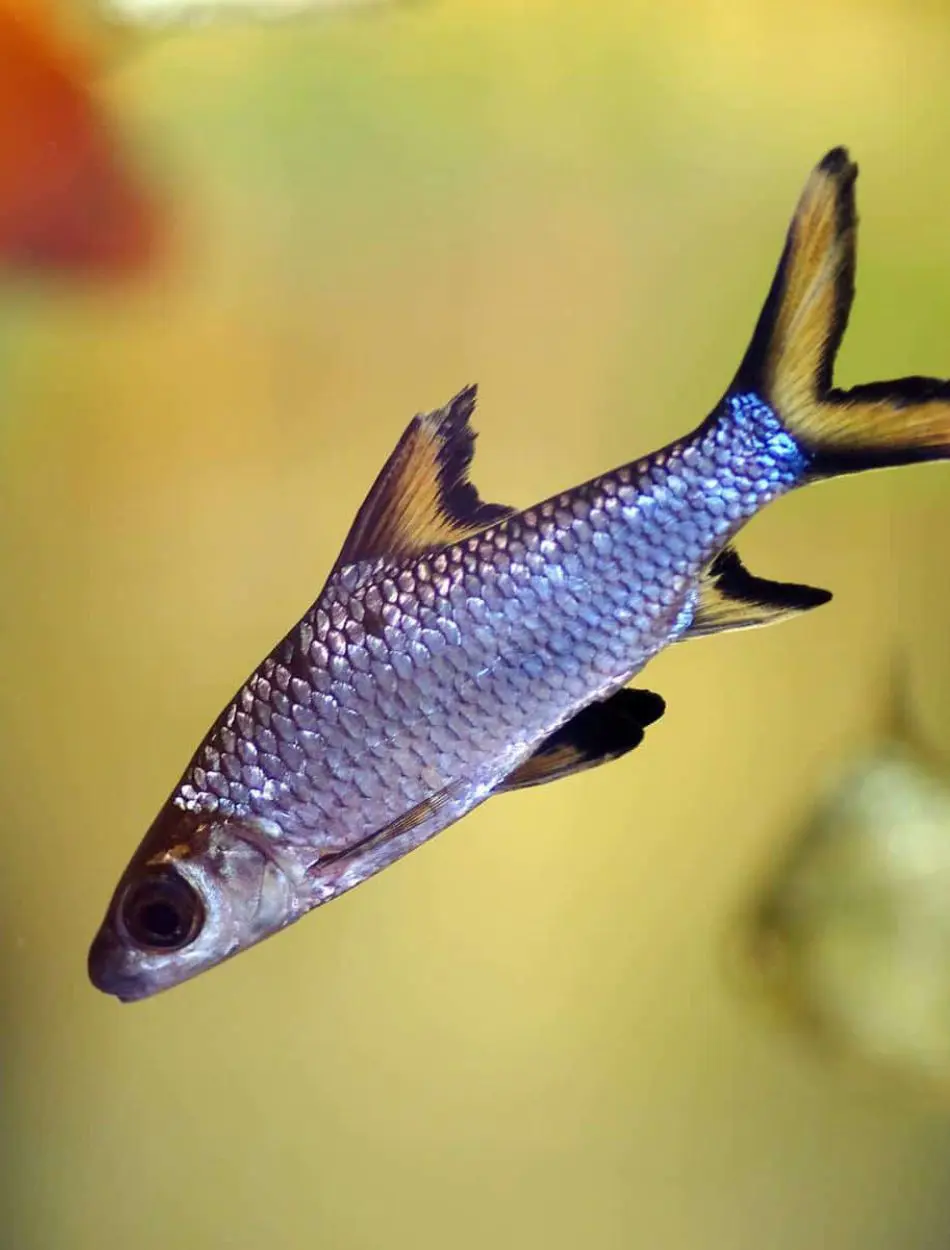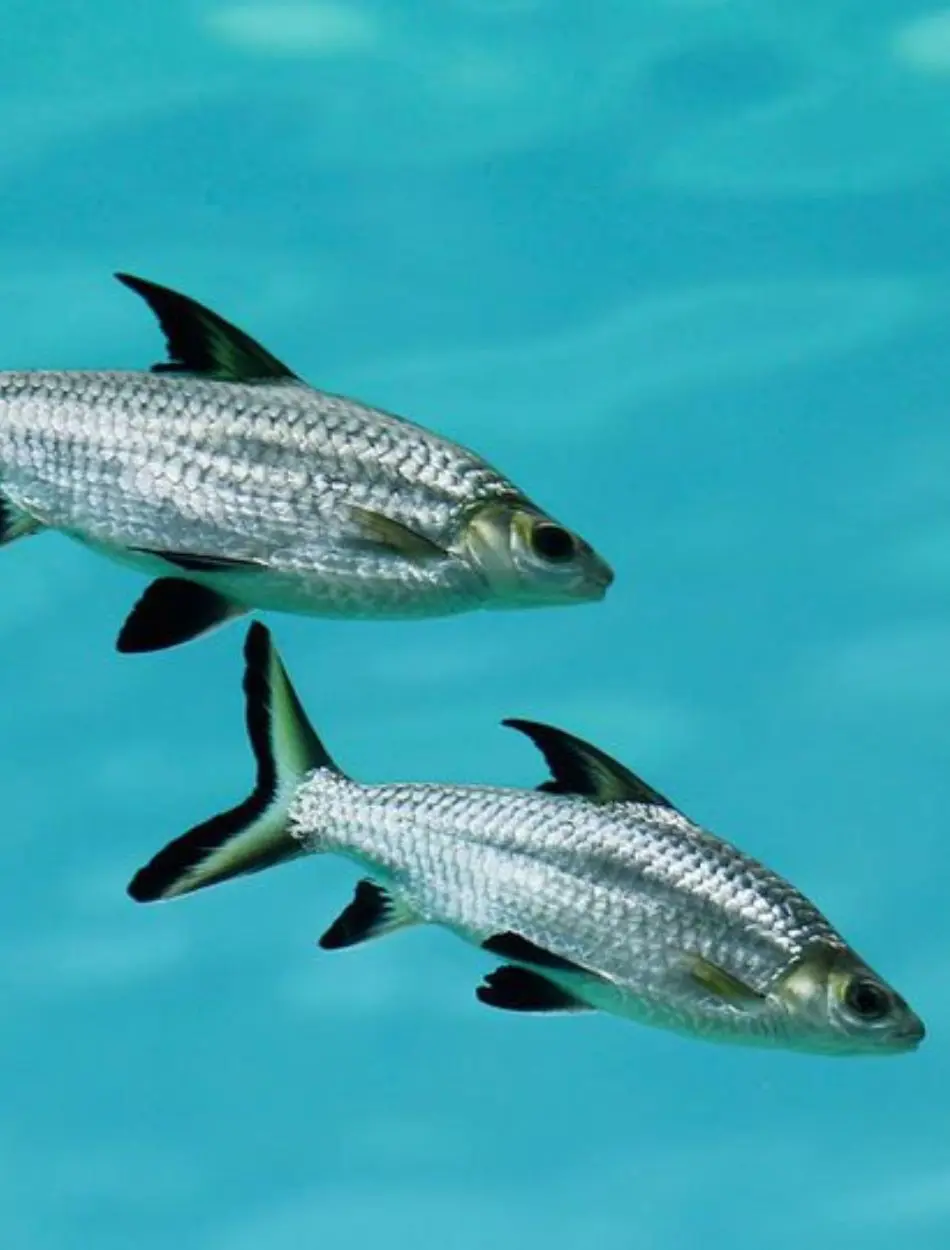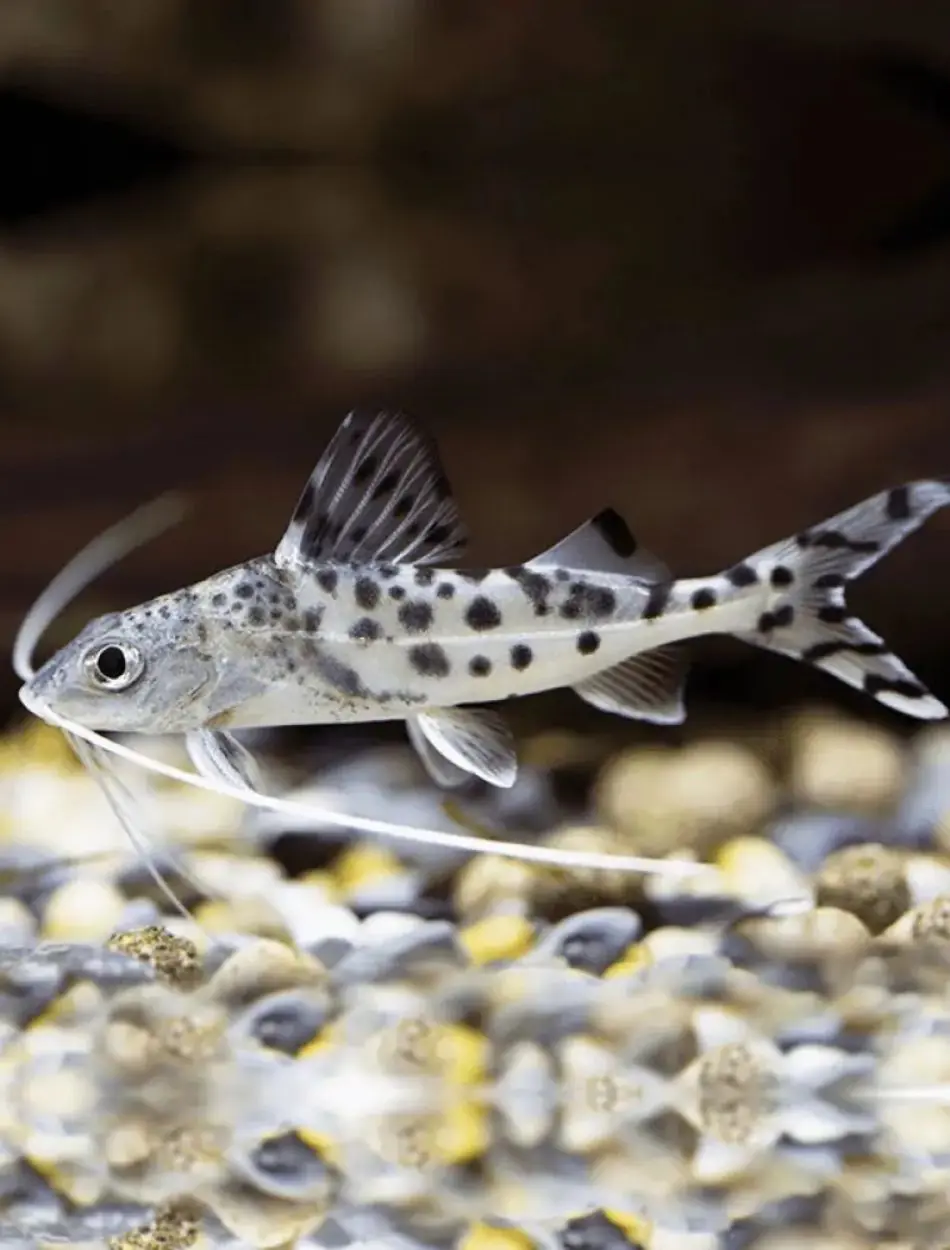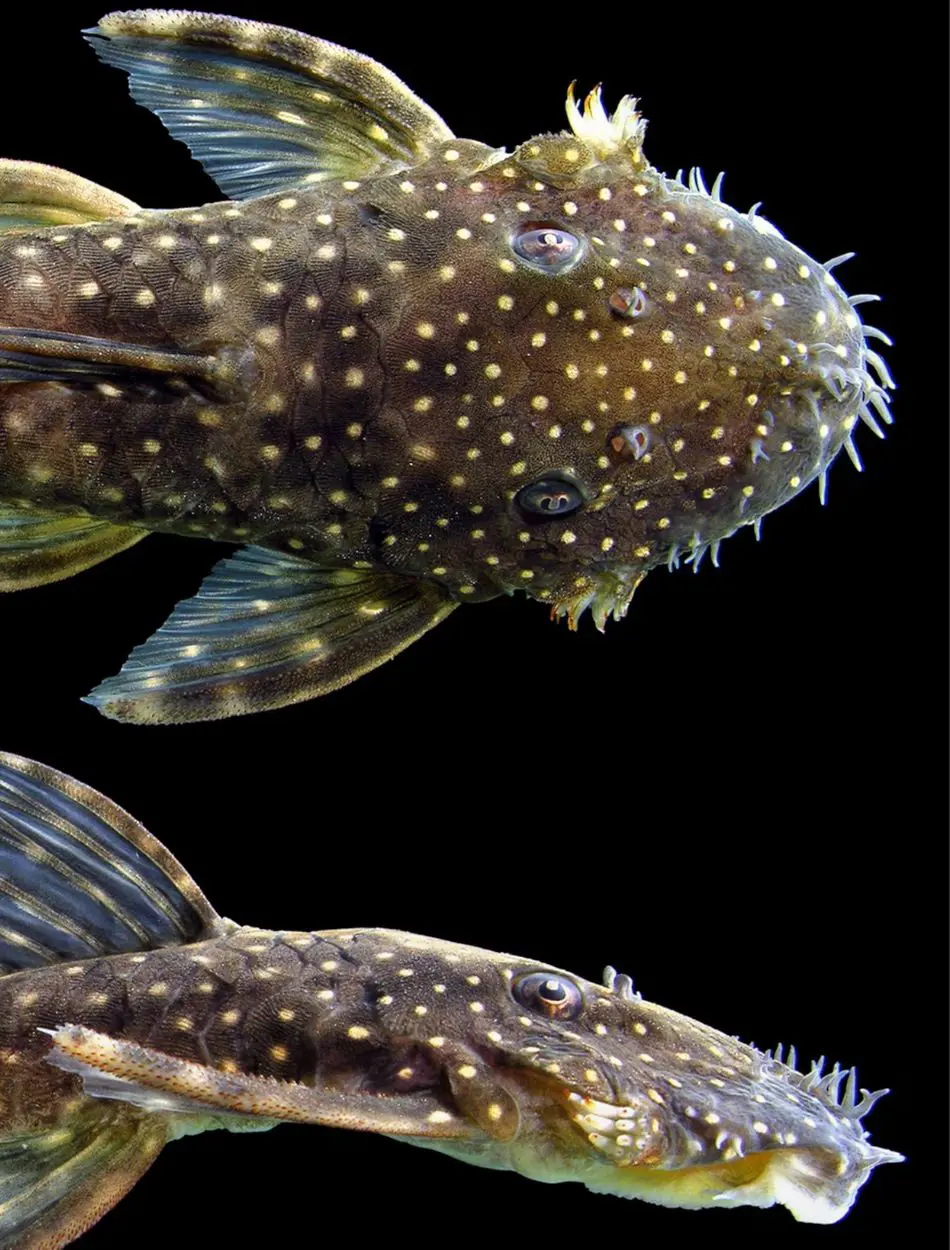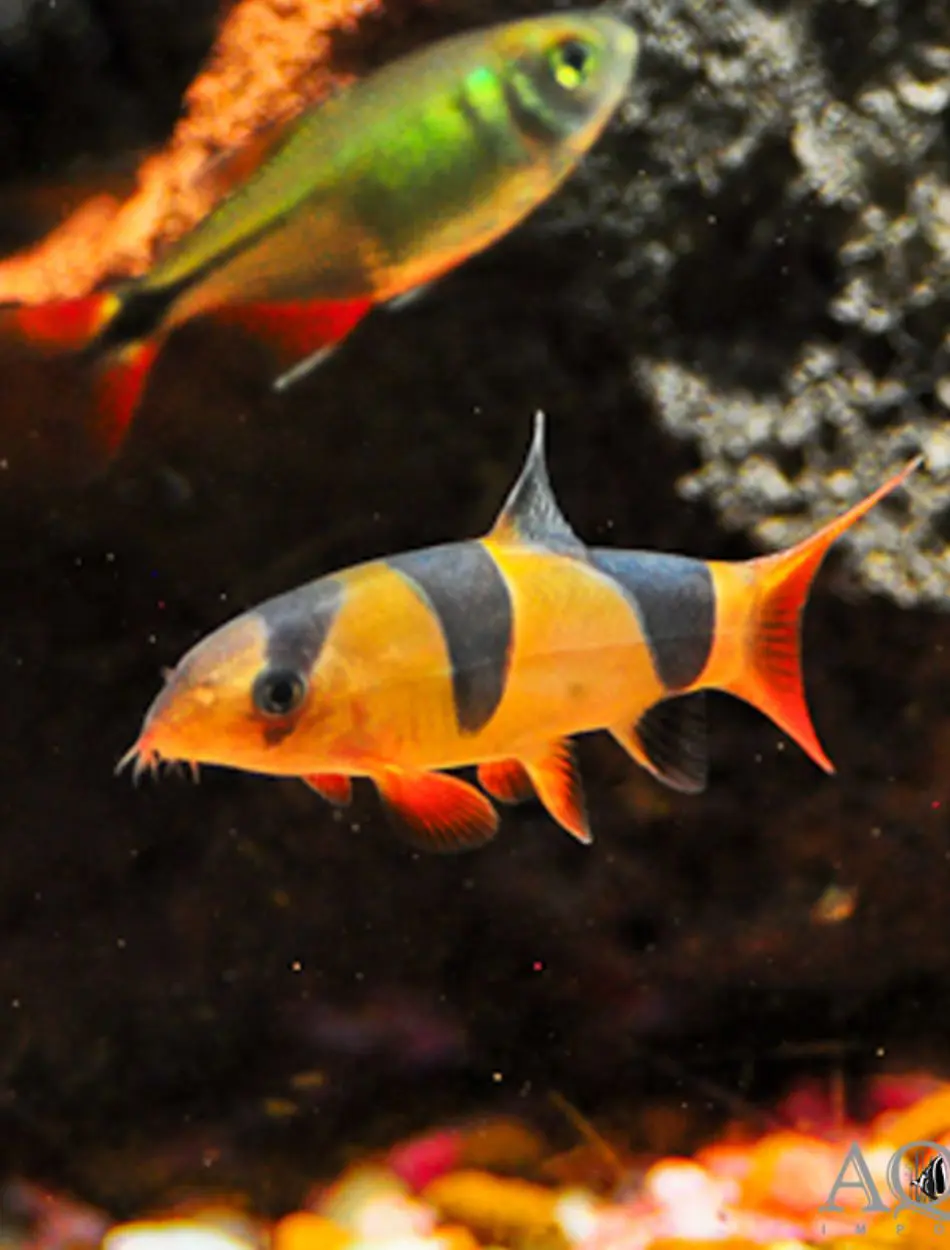Pearl Danio Care Guide And Tank Mates

Pearl Danio, also known as Danio albolineatues, is an extraordinary fish best suited for beginners. It is a peaceful and calm fish that adapts to various water conditions and makes an ideal match as a community fish.
It is an easy-going creature that is hardy, easy to care for, and gets along with any other peaceful fish. The beauty and elegance of this species elevates the look and aesthetic of any tank they are kept in. If you plan to add one to your tank, here are some facts, care guides, and tank mate details.
Overview
- Life Span: 5 Years
- Common Names: Pearl Danio, Spotted Danio
- Scientific Name: Danio Albolineatus
- Adult Size: 2 inches
- Color: Dark blue with white/yellow spots in a galaxy pattern
Origin And History
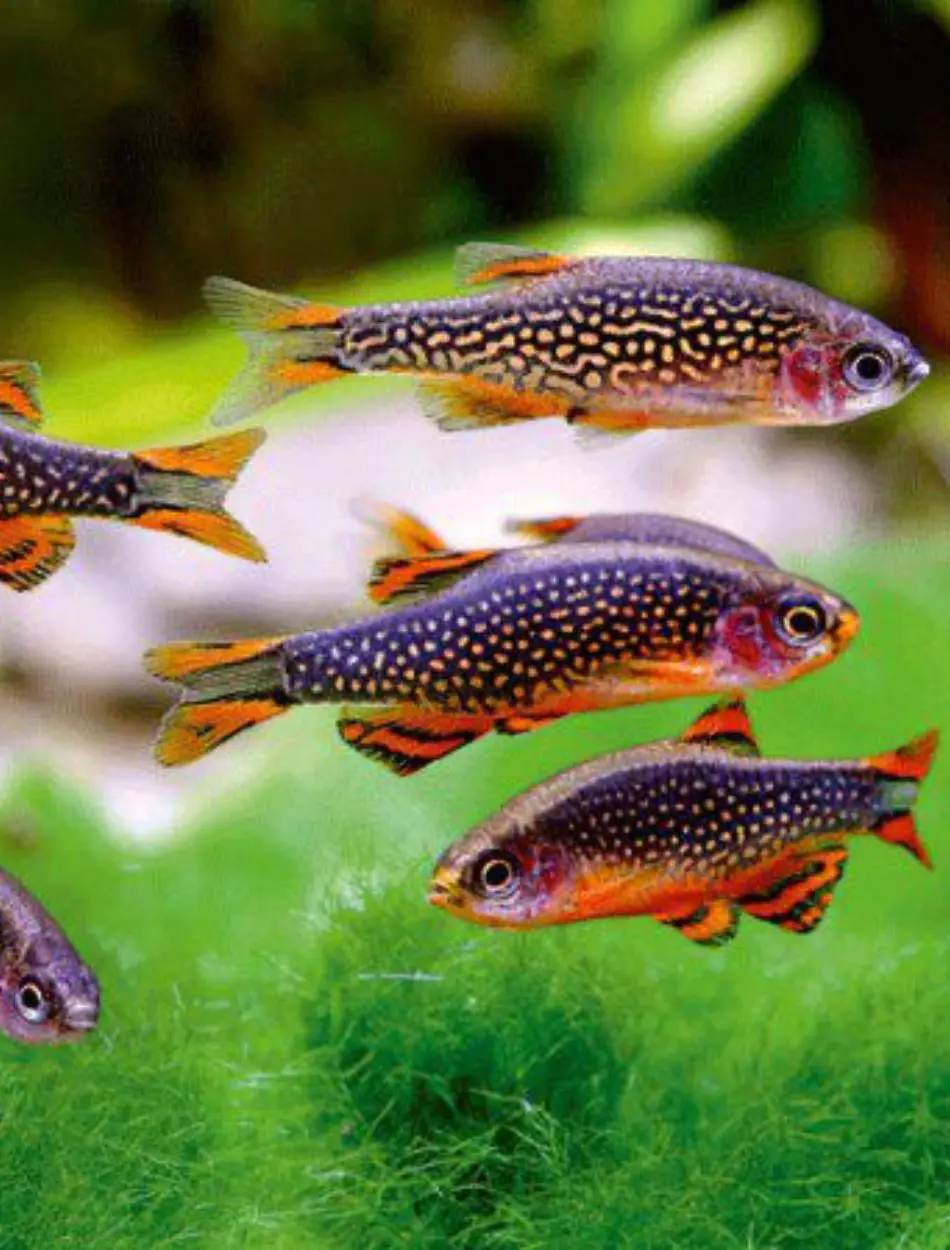
Pearl Danio was first imported to Europe in 1911 and has been popular ever since. These fish are native to the clear, swiftly moving streams and rivers of Myanmar, Thailand, and Sumatra. In the wild, these fish feed primarily on insects and zooplankton.
The vegetation in these areas is distinguished by sandy or gravelly substrates, submerged plants, and calm water that provides the fish with plenty of cover and food sources. The climate also suited the fish with cool water that is generally soft and slightly acidic to neutral.
Initially, the fish had several scientific names, however, later, a few of them were determined to be the color variants of this creature. However, there are still debates regarding the classification of these differences in color. Previously, this fish was classified under the Brachydanio genus but has been proclaimed invalid.
Traits and Characteristics
- Size: These fish are small in size that grow up to about 2 inches in length. Due to their small size, they are best suited to various tank sizes. However, it is best to keep them in groups in a tank that has ample space for swimming.
- Coloration: One of the most distinct and attractive features of this fish is its iridescent sheen which appears to change color depending on the lighting. Their bodies are bluish-white or pinkish with a subtle glow with a sign of gold, green, or violet along the flanks. The color is very vibrant under natural or subdued lighting. Moreover, they have a clear fin with a slight tint of light hue.
- Body Shape: They have an elongated, slender body that narrows to a caudal peduncle, along with a forked tail. Their streamlined body helps them to swim in fast-moving waters. These fish have a small dorsal fin at the back of the body, ventral fins near the head, and pectoral fins.
- Sexual Dimorphism: The difference between a male Danio and a female is very subtle. The body of a male fish is slimmer with more intense color, especially during the breeding season. Females have a round body, especially when carrying eggs, and are slightly dull in color than males.
Behavior and Temperament
These fish are active and energetic swimmers who are constantly exploring all the areas of a tank. These fish prefer to stay on the middle or upper level of the tank. They showcase very peaceful and calm behavior and are suitable for community aquariums with non-aggressive fish.
It is a schooling fish that should be kept in groups of at least 6. When kept in a group, they show interesting behaviors such as synchronized swimming and playful chasing. It is not recommended to keep them alone or in smaller groups as they tend to become stressed.
These fish make an excellent tank mate for other small, non-aggressive fish. They are more focused on their group and are not involved in fin-nipping activities.
Habitat and Care
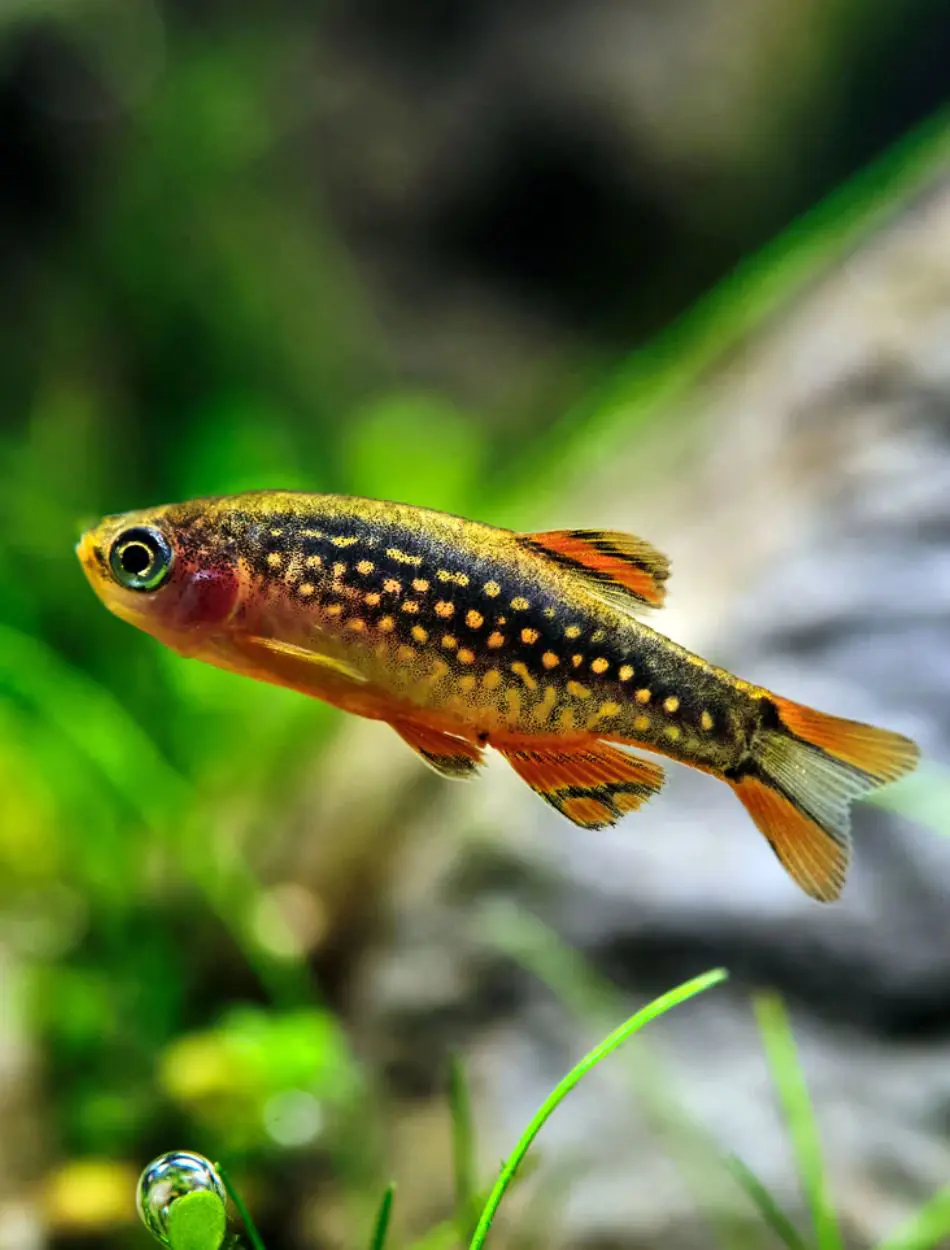
- Tank Size: It is recommended to keep these species in a tank size of at least 10 gallons. It is even better to keep them in a larger tank, especially if you plan to keep them in a group. A larger tank allows them to swim efficiently and also helps to maintain stable water conditions.
- Substrate: While adding a substrate, it is best to use fine gravel or sand. The use of dark substrates helps to enhance the vibrant color of the fish.
- Plants: You can add various live plants like Java fern, Anubias, and Vallisneria as they provide shelter and mimic the natural habitat. Moreover, adding floating plants like duckweed or water lettuce can help diffuse light and create shaded areas.
- Decorations: When adding decorations to your tank, avoid sharp or rough items that may harm the fin of the fish. Instead, you can add driftwood, smooth rocks, and caves that can act like a hiding place and break sight lines.
- Lighting: These fish are not light sensitive, however, adding too much bright light can cause them stress. Therefore, it is best to use moderate lighting that can create a natural and calm ambiance.
- Filtration: While adding a filter. It is crucial to add a high-quality gentle filter that provides moderate water flow. They favor swimming in currents that are not too strong. So, make sure the current is moderate and the water is calm similar to their natural environment.
- Water Parameters: Another very crucial factor is water parameters. They should be kept in water with temperatures between 64-74 degrees Fahrenheit. Even though they are hardy and can survive in a range of temperatures, they thrive and enjoy cool waters. The pH of the water should be between 6.5 and 7.5, slightly acidic to neutral.
Make sure to change 20-30% of the water regularly to maintain high water quality. This will remove the buildup of harmful substances like ammonia, nitrites, and nitrates. Regular testing of water for ammonia, nitrite, nitrate levels, pH, and harness is also necessary to ensure the proper health of these fish.
Diet And Nutrition
When found in a natural habitat, Pearl Danios are opportunistic feeders that consume food available in their environment. Their primary diet consists of insects, larvae, crustaceans, mosquito larvae, small worms, daphnia, copepods, rotifers, biofilm, algae, and other plant materials.
Algae and plant materials provide essential nutrients and fiber to them. Moreover, they also eat decaying plant material and small particles when other food sources are short in supply.
Diet in the Aquarium
To ensure that they get all the important nutrients, it is important to replicate the natural diet of these fish. They eat staple foods, live or frozen foods, and vegetable-based foods.
When providing them with a diet, you can feed them high-quality flake food or micro pellets that are filled with proteins, vitamins, and minerals. Moreover, choosing pellets with high protein can help enhance the color of your fish.
You can also provide them with live or frozen foods such as brine shrimp, daphnia, and bloodworms. These foods are similar to their natural habitat and rich in protein resulting in healthy growth and activity.
Providing balanced vegetables such as spinach, zucchini, or peas can provide fiber and essential nutrients to the fish. You can boil the vegetables briefly, cool them, and add them to the tank. In addition, incorporating spirulina flakes will provide them with vitamins and minerals and also help to enhance coloration and boost the immune system.
Special Considerations
If you are breeding the fish, the fry will require some specialized food. In the initial stages, feed them commercial liquid food, but as they grow you can feed them finely crushed flake food. It is very important to observe your fish during feeding. Make sure that all individuals are eating, especially if they are kept in a community tank where competition can be high.
Feeding Schedule and Amount
They can be fed 2-3 times per day in small amounts. Overfeeding them can lead to poor water quality so make sure you are offering the required amount of food. You can also rotate between various foods to ensure a balanced diet. Moreover, this keeps the fish engaged and promotes natural feeding behavior.
Tank Mates Of Pearl Danios
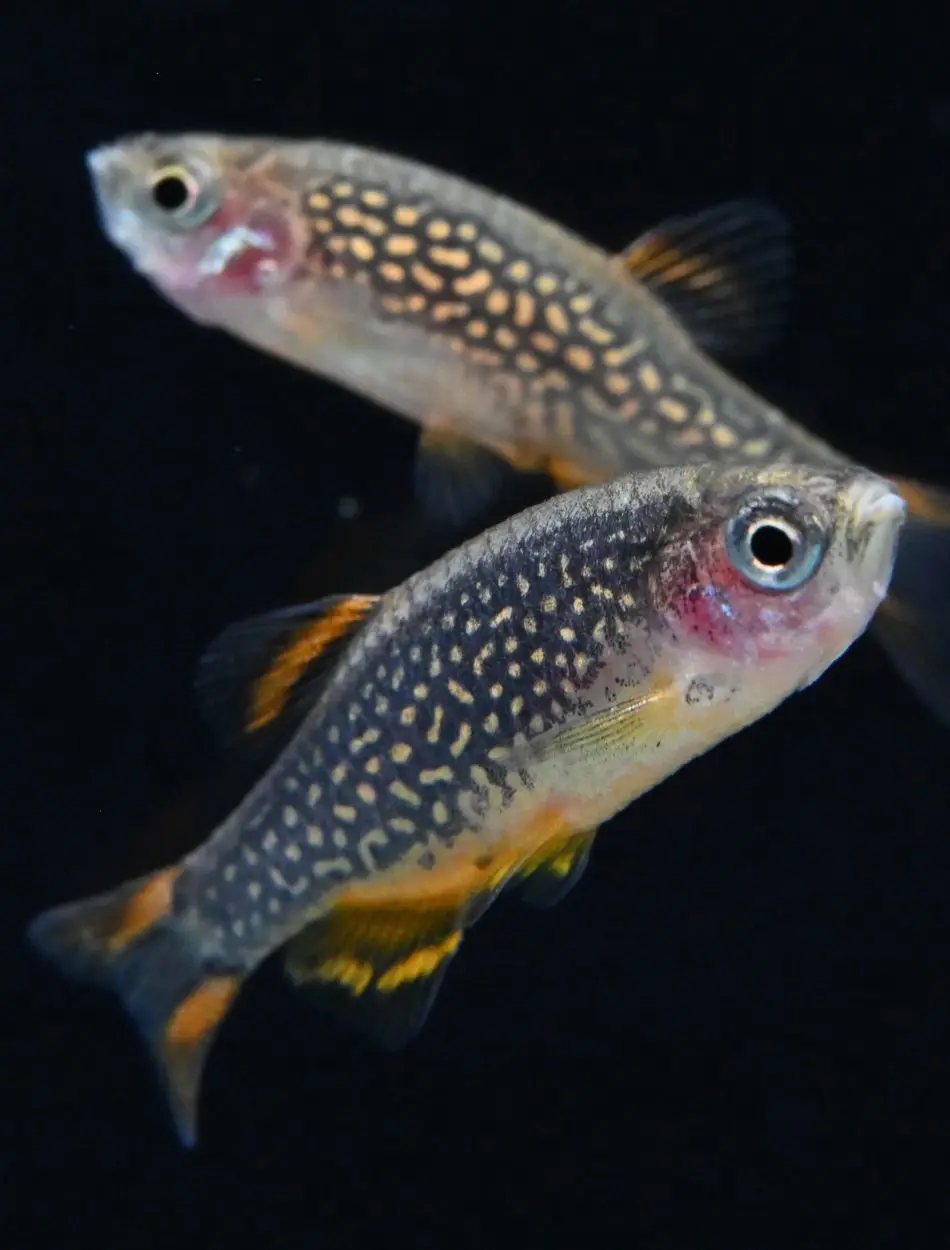
Pearl Danios is a very versatile and peaceful fish. They get along well with various small, non-aggressive species. While keeping them in a tank, it is important to consider that their tank mates share similar water parameters and temperaments.
These fish get along with other danios like Zebra Danio and Celestial Pearl Danio. They are similar, equally peaceful, and make a good tank mate to Danios. They are also suitable for various species such as Neon Tetra, Cardinal Tetra, Harlequin Rasbora, Chilli Rasbora, Corydoras Catfish, Dwarf Gourami, Honey Gourami, Guppies, Platies, Bolivian Ram, Apistogramma, Amano Shrimp, and Nerite Shrimp.
It is very important to keep them away from aggressive tank mates like Jack Dempsey and the Oscars. They may see Danios and prey and can harass them as well. Fish such as barbs or certain tetras that are known to nip fins should also be avoided. You should also keep them away from large fish that may eat them. It includes fish such as angelfish or larger cichlids.
Common Health Issues
Pearl Danios can suffer from some common health issues when they cannot adapt to the environment of the tank or if they are not provided with high-quality nutritional foods. Some of the health issues are as follows:
Ich
Ich is one of the common health issues in which the fish develops white spots on the skin, gills, and fins. It causes scratching, rapid gill movement, and reduced appetite. You can treat this disease by raising the temperature of the water and quarantining the new fish.
Fin Rot
The main sign of fin rot in a fish is fraying or discoloration of fins with red, inflamed edges. It can be caused due to poor water quality or stress resulting in bacterial infections. This disease can be treated by improving the water quality and reducing stress.
Fungal Infections
It is a health issue in which white, cotton-like growth appears on the skin or fins of the fish. It is caused due to injuries or poor water quality, so it is important to improve the water quality and use antifungal medications to treat and prevent it.
Swim Bladder Disorder
Swim bladder disorder is a condition caused by constipation, overfeeding, or infections. The symptoms of this disease are difficulty maintaining buoyancy and abnormal swimming behavior. To treat your fish, you should adjust the fish's diet and reduce feeding.
Velvet Disease
It is a parasitic infection in which a dusty or velvety appearance occurs on the skin. Symptoms include rapid gill movement, lethargy, and reduced appetite. To treat this, raise the water temperature and use anti-parasitic medications.
Breeding
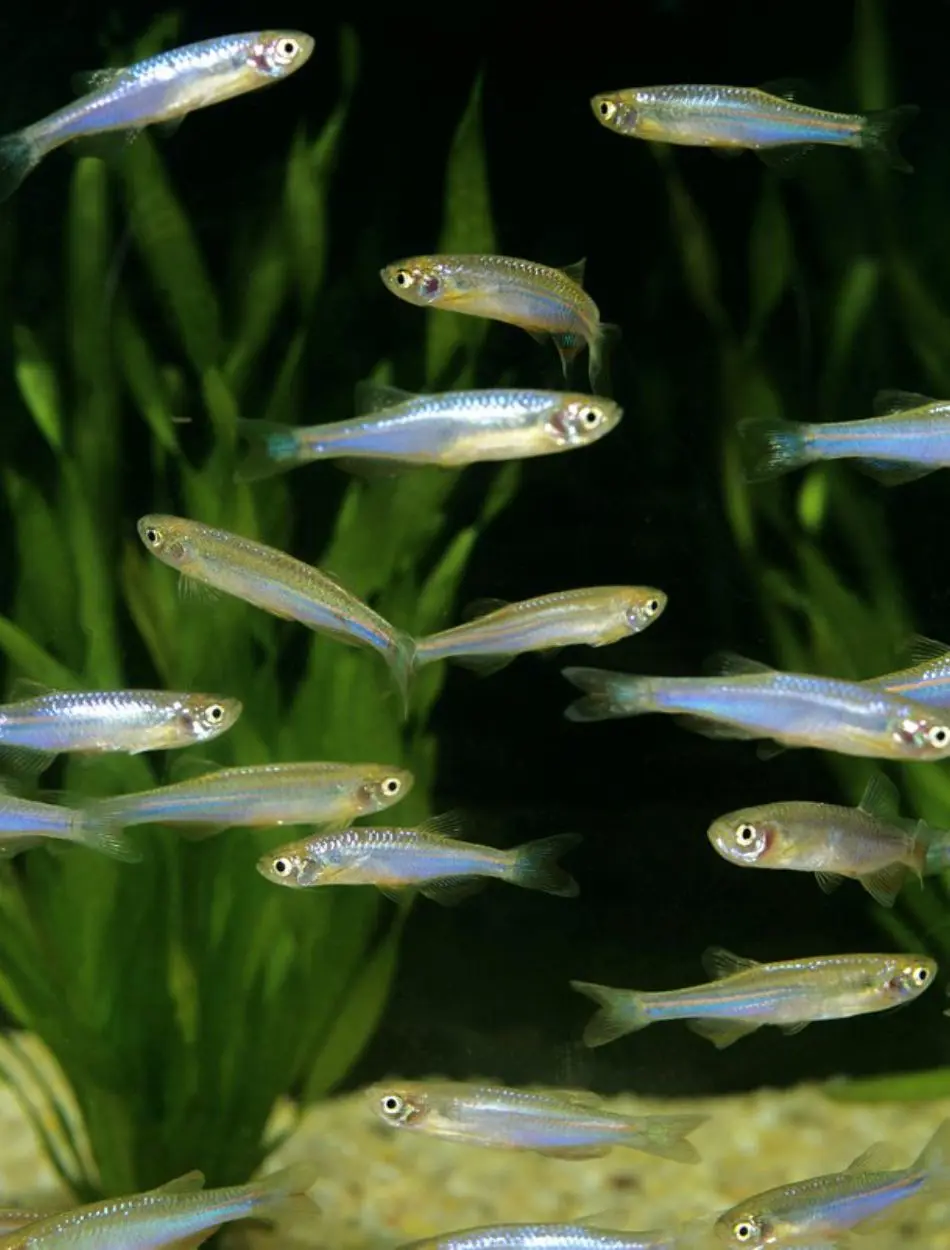
Pearl Danio is an easy-to-breed fish that lays eggs. They are very loyal when the breeding pairs are formed. Some of the conditions required while breeding them are as follows:
- Tank Setup: While setting up a tank, use a separate breeding tank of about 10 gallons. Make sure to add fine-leaved plants or spawning mops where the eggs can be laid. Use clean water that is slightly acidic to neutral pH and temperature between 72-76 degrees Fahrenheit.
- Breeding Behavior: While pairing, introduce a group of 4-6 Danios, a mix of males and females into the breeding tank. The males will chase the females to perform courtship displays. To ensure successful breeding, you may have to separate the pair once spawning begins.
- Spawning: The females will lay eggs randomly in the plants or spawn mops as they scatter eggs. This spawning process usually occurs in the morning. The eggs of these fish are tiny, transparent, usually difficult to see, and stick to the plants or spawn mops.
- Post-Spawning Care: After the spawning phase is over, make sure to remove adults from the breeding task. They do not show parental care and can eat their egg, so it is very important to follow this step.
Depending on the water temperature, the eggs will hatch in about 2-3 days. Initially, the fries will be fed on their yolk sac and later will require supplemental feeding. - Caring for Fry: In the initial stage, you can feed the fry with infusoria or commercially available liquid fry food. With time, you can feed them fine crushed flake food or baby brine shrimp.
Water quality should be maintained very properly with frequent water changes that ensure healthy growth. - Growth and Development: If provided with proper nutrition and water conditions, the growth rate of fries is very quick. You should monitor their growth and adjust their feeding as per their need. In addition, you can also introduce them to a community task as they grow with suitable tank mates.
Top Lists

